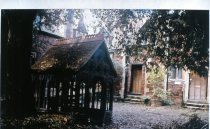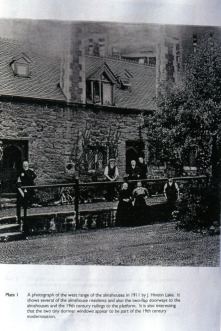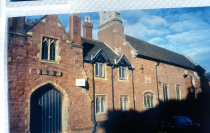
WYNARDS ALMSHOUSES
Built in 1430 by William Wynard, the almshouses were to provide 12 dwellings for “poor people” who would receive 7d per day for food but would lose a penny for every day they missed Chapel !
The endowment passed to the Speke family through Wynard’s niece and seems to have coasted happily through the next century until Edward VI appropriated the priest’s stipend, although a later Speke maintains that the family kept up the almshouses and the weekly dole.
By the 1640s Exeter’s population was divided between the powerful puritan merchant classes on the one hand and the pro-Royalists with the clergy on the other. Exeter’s mayor was displaying harsh puritan sympathies but when the Civil War broke out the city tried to take a neutral line. It was attacked three times by Royalist forces and after the third attack in 1643 led by Charles’s nephew, Prince Maurice, our puritan city was forced to surrender. To escape retaliation the defending army had quickly to divest themselves of their armour, some of which was lost in the attic of Tuckers Hall until unearthed by Victorian building improvements.
Probably Wynards was destroyed in the Civil War and there is no record of any steps being taken to relieve its residents. Thirty years later Sir George Speke was forced by decree to restore the buildings but he argued every step of the way. He was only giving the residents 8d weekly (reduced from 13d) and he also appeared to be using the almshouses to accommodate his own people.
The charity was sold to the Kennaway family in 1789 for £1,300 and in 1830 the chapel was re-thatched for 6s.11½d. In 1846 there is a reference to “12 decayed tradesmen” but the 1851 Census indicates 15 households. The Kennaways now stood accused of placing former servants in Wynards together with females, who were not eligible.
This photo, taken in 1911 shows some of those ineligible females. Thirty years on the Wynards Trust was sold to Exeter Municipal Charities who made some improvements (such as indoor toilets) but only provided a common shared bathroom – considered good enough for people on charity.
By 1963 the E&E reported that "several of the residents had their own radio and television sets" - appalling extravagance!
But Municipal Charities had a problem. To make the houses attractive to potential residents was considered too costly so they considered conversion to a museum, an arts centre or even demolition. A welfare centre was the final solution and in March 1970 the property was sold to the Council for £5,373.18.0d.
Sadly, although the Council did correct the dry rot and loose roof tiles, the buildings generally were very neglected. Nevertheless, for over 20 years Wynards housed Marriage Guidance, Samaritans, Citizens Advice Bureau, the Council for Alcoholism, Pre-School Playgroups, Tapes for the Handicapped and the Young People’s Counselling Service.



